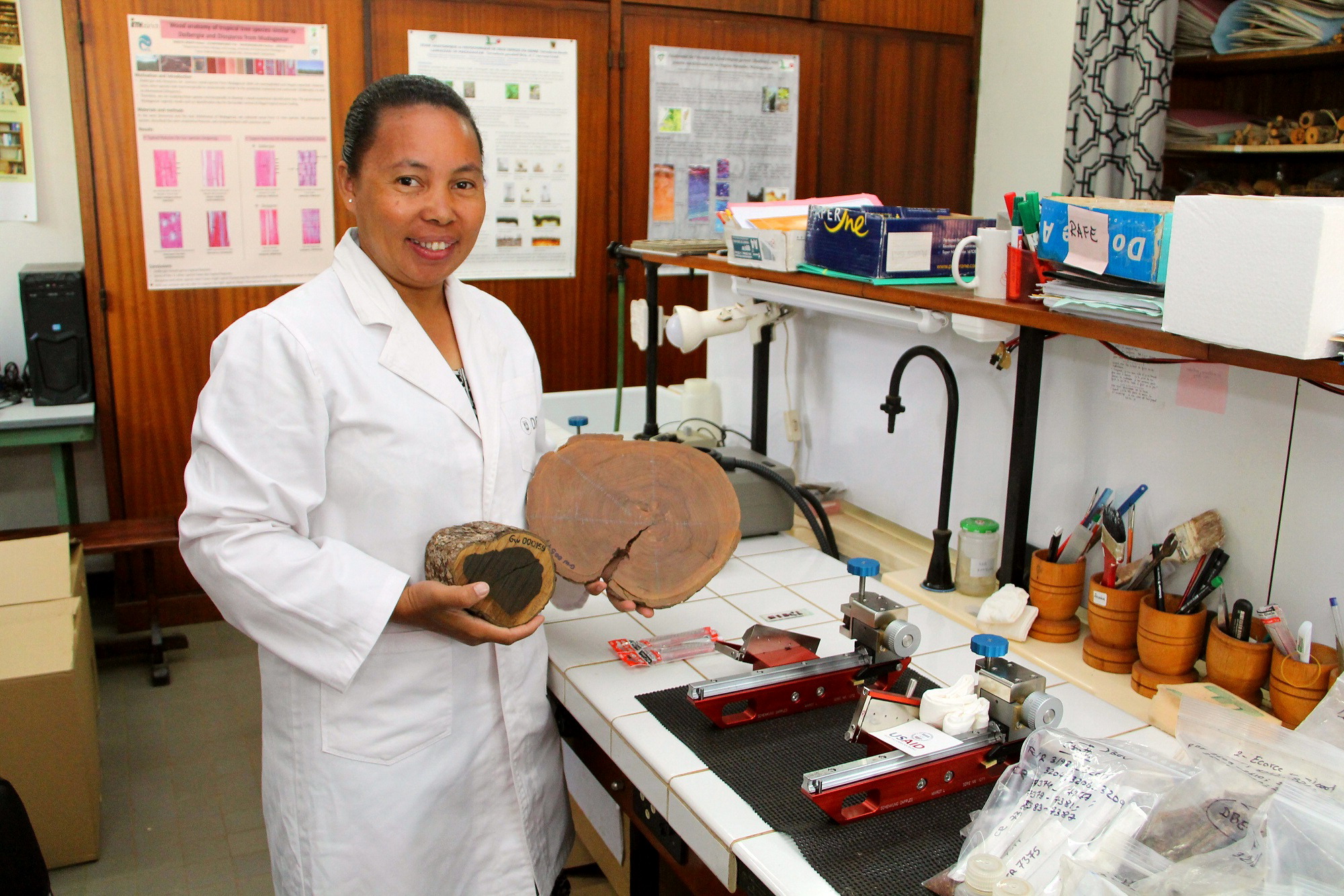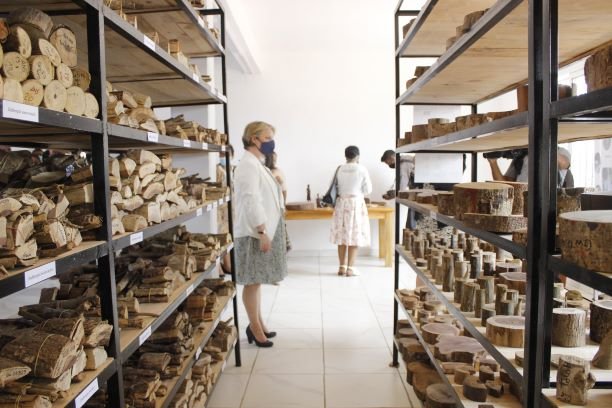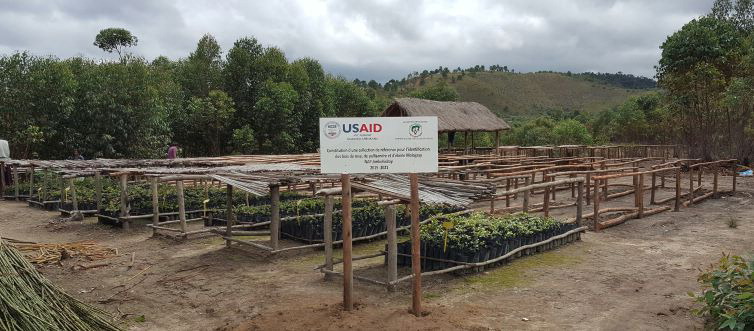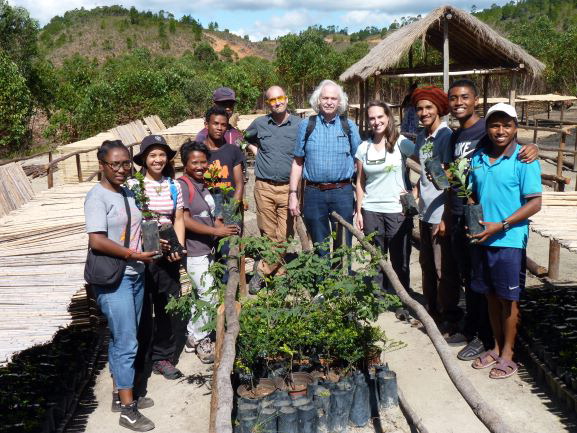Cycle 7 (2018 Deadline)
Building a reference collection for Malagasy rosewood, palissander and ebony identification
PI: Bako Harisoa Ravaomanalina (harisoa.ravaomanalina@gmail.com), University of Antananarivo Madagascar
U.S. Partner: John Hermanson and Michael Wiemann, United States Department of Agriculture, Forest Service, Forest Products Laboratory
Project dates: November 2018 - December 2022
Project Overview:
This project is motivated by the problem of ongoing illegal logging of precious timber species in Madagascar. Madagascar is a source of two commercially important precious woods derived from species in the genera Dalbergia and Diospyros that are known by the vernacular names rosewood, palissander, and ebony. The ever-increasing demand for precious timber on the international market has led to a massive increase of illegal exploitation in Madagascar in recent years. Despite existing national trade bans, illegal exploitation continues unabated in many forested areas. The inability of the Malagasy government to curb illegal exploitation and trade has resulted in the listing of logs and sawn wood of both Dalbergia and Diospyros in Appendix II of CITES (the Convention on International Trade in Endangered Species of Wild Fauna and Flora). The listing is necessary to impose monitoring over the trade legality of wood and wood products and help ensure that exploitation is not detrimental to the survival of the exploited species of concern. However, monitoring the trade through identification of individual species and points of origin is difficult when botanical materials such as leaves, flowers, and fruits are no longer associated with timber products (for example, standing trees that are not in flower/fruit, or logs or sawn wood). Additionally, gaps in the taxonomic circumscription of species of Dalbergia and Diospyros are subject to much debate. Up to now, Malagasy precious woods have been traded under the local vernacular names rosewood, palissander, and ebony. Reliable species identification requires a reference wood sample that is connection to accurately identified botanical material, yet no such vouchered library of woods of Malagasy Dalbergia and Diospyros exists today.
Project objectives:
- Develop accurately identified collections of wood specimens and their associated herbarium vouchers of all Malagasy CITES listed Dalbergia and Diospyros species. These collections will be used for taxonomic revisions and for establishing and validating different identification systems. A reference collection for all species will include supplemental information for each sample and will provide a set of reliably identified reference samples for use with the development of emerging wood identification methods.
- Finalize identification systems that are being developed by Dr. Ravaomanalina based on wood anatomy and extended analytic-based wood species tools, incorporating the results of the wood anatomy and machine learning research.
- Reduce species extinction risk by promoting ex-situ conservation at four sampling sites and/or protected areas. The team will set up nurseries to grow young plants and promote the planting of rosewood, palissander, and ebony throughout Madagascar
This project will facilitate an exhaustive inventory of species of Dalbergia and Diospyros throughout Madagascar and help decision makers to evaluate the current status of the country’s precious wood resources. The project will also contribute to Madagascar’s efforts to replace the current unsustainable, abusive and often illegal trade in precious woods with a sustainable and equitable commercial system, one that both provides tangible benefits to local communities and promotes exploitation at levels that will generate reliable, steady income over decades. In the current system, only a few actors benefit from the harvest and sale of Dalbergia and Diospyros, and there is little or no incentive to manage these valuable resources sustainably. Yet a well-organized and managed system to manage and oversee the commercialization of precious woods could make an important contribution to economic development, generating significant revenue locally among the low-income populations that live in close proximity to areas that still have precious wood resources, as well as at the regional and national levels. The activities proposed here will help the scientific community meet its commitment to deliver key elements required for a properly controlled and well manage commercial precious woods sector, and without which sustainable exploitation will remain impossible.
Final Summary of Project Activities
Objective 1: - Seventeen sampling campaigns were carried out in 8 regions of Madagascar during the project, resulting in 651 collections, composed of 347 Dalbergia species, 281 Diospyros species and 26 others genus. These collections bring the total to nearly 2206 herbarium specimens, 917 herbarium specimens for morphometry, 2422 leaves in silicagel, 1019 branches, 603 barks, 580 stem woods and 38 flowers in alcohol. These samples contribute significantly to improved species delimitation in both genera, while also informing conservation assessments and providing taxonomically verified material for morphological, anatomical, spectrometric, and DNA sequence research in support of the development of reliable identification tools.
- 2206 herbarium specimens were mounted and labeled MBEV104390 for reference. They were then deposited in the herbarium of the Department of Plant Biology and Ecology. The cross-sectional surface of the 580 stem woods was polished. A Gw code "Gasikara wood" was assigned to each wood specimen in the collection at the xylotheque of the University of Antananarivo. Each herbarium specimen corresponds to a wood specimen and the information on these specimens is available in the common database of the G3D project (b3dm 1.0).
- Comprehensive data on all target tree species of Dalbergia and Diospyros is available via TROPICOS and the Madagascar Catalogue (potentially sensitive data masked to prevent public access).
- Madagascar's first wood library - the "Xylotheque of the University of Antananarivo" was inaugurated on December, 18, 2020 and houses around 4500 wood specimens, mainly Dalbergia and Diospyros species and their look-alikes species. Forty (40) Dalbergia species among the 48 from the littérature (Bosser & Rabevohitra, 2006) are currently in wood reference library. Forty seven (47) percent of Diospyros species (about 114) from 250 species of Madagascar catalogue (www.tropicos.org) are available. Herbarium vouchers, samples for sectioning and microscope slides are available for scientists and users.
Objective 2 : - Anatomical atlas of Dalbergia and Diospyros species from Madagascar Harisoa B. Ravaomanalina John C. Hermanson Michael C. Wiemann This second version of the atlas is available and is more thorough, and includes more species and more replicate samples of each, listing forty species of Dalbergia and tewnty-five species of Diospyros . It focuses on macroscopic wood identification, and includes character lists to be used in a proposed identification key. An advantage of this second version is that macroscopic and microscopic features are simultaneously presented. It is useful for both traders and competent authorities who analyze wood specimens as well as for scientists who rely on microscopic anatomy for further identification.
- A paper entitled "Comparative wood anatomy of 15 Malagasy Diospyros species (Ebenaceae)" has been published in IAWA Journal (27 October 2021). One paper on Dalbergia species is also pending submission.
- A pilot xylotron wood identification tool with comprehensive characters and character state data compiled for 19 Dalbergia and 25 Diospyros species, tested and refined with input from US partners, will be soon be ready for field trials.
Objective 3: - Over 4000 plants have been restored in the forests of Ambohidray, Ampasindava, Marolambo, and Tsitongambarika, with the remaining 2500 waiting to be planted.
In terms of students' supervision and their degree defenses, seven Master students took advantage of the project and analyzed scientific data on Dalbergia and Diospyros species anatomy and growth analysis and needed basic documents of Ambohidray Protected area. In terms of project impact, thanks to this project and Dr. Harisoa's and her team's research and the scientific advances of the Malagasy Precious Woods Consortium team's work, Dr. Ravaomanalina has been able to identify the list of commercially valuable of Malagasy Dalbergia and Diospyros species action plan in CITES Décision 18.98 in paragraph a), required by the CITES Secretariat. Thanks to the effort deployed in this PEER project, a wood identification tool based on wood anatomy (macroscopic and microscopic levels) for 19 Dalbergia and 23 Diospyros species was developed.
Protected areas' Development and Management Plan has been established. The third objective of the project to reduce species' extinction risk by promoting in-situ conservation at four sampling sites and/or protected areas, contributes not only to an effective involvement of the local population in the conservation of threatened trees but to a reliable and efficient implementation of the Development and Management Plan for Ambohidray, Tsitongambarika, Marolambo and Ampasindava protected areas.
In terms of wood species identification methods, the standardized sampling protocol used for this work includes the preparation of samples to be used for a variety of identification techniques from different laboratories in Madagascar and abroad, including wood anatomy, NIRS, DART-form, DNA analysis, etc. This newly developed and field-approved sampling protocol will expand the existing sample to include all species of Dalbergia and Diospyros and their look-alike species, with multiple samples of most species. The samples are ready to be shared with others scientists.
Now that the project has been completed, in terms of future plans, Dr. Ravaomanalina reports, that she will continue to work on automated anatomical wood identification systems. To put her research results into practice, she will continue and complete the implementation of needed data for all large trees Dalbergia and Diospyros species with her U.S. partners to make the Xylotron machine functional. It is an automated anatomical wood identification system using portable device using both analytic-based wood species tools (xylotron) developed by Drs. Wiemann and Hermanson from USDA and Xylorix identification platform performed by Dr Yong Haur Tay from the Centre for Computing and Intelligent System (CCIS), Malaysia. Two methods have been developed and performed to imitate the capability of a human wood anatomist in different airports, to identify which type of timber the piece of wood belongs to. Both do not require a special competence from the users developed for non-specialists to identify unknown woods in the field.
In terms of capacity building, training of CITES stakeholders was planned within the framework of this project, but because of the pandemic it was not carried out. On the one hand the goal is to facilitate the work of the enforcement authorities and to achieve the compliance of the current listings by equipping them with a very practical tools (ex: xylotron and xylorix) and performing on-site wood identification with very minimal training within all Malagasy concerned regions. On the other hand, the goal is to train them to enhance their capacity for wood identification which will assist during interdictions, investigations, enforcement of harvested timber and export in order to comply with CITES regulations and to ensure the legacy of the wood at national and international level.
Most of precious wood species are already rare and endangered and it is more necessary to identify species that have similar properties. To this end, the plan to build and add the existing reference collection with lookalikes species is important to avoid any confusion during the controls process. Going forward, developing the corresponding look-alikes species' identification tool to identify substitute species of Dalbergia and Diospyros species will help diversify the choice of species, give added value to the under-classified species, and help choose substitute species for precious species that are in danger of disappearing. It will reduce deforestation, reduce pressure on precious wood species, and ensure the regeneration of wood species. Moreover, the final results will be used for the Malagasy forests administration to improve forest governance and forest resource management and development.
In terms of in situ conservation in situ, Harisoa plans to continue promoting in-situ conservation and domestication of substitute species within Malagasy concerned regions. The in-situ conservation work will provide some insurance against future loss of genetic diversity due to illegal logging and provide materials for future broad scale cultivation of valuable timber species, promoting local industries.
Publications:
Ramanantsialonina, R. N., Crameri, S., Sandratriniaina, N. A., Wiemann, M. C., Hermanson, J. C., Rakouth, B., & Ravaomanalina, B. H. (2022). Comparative wood anatomy of 16 Malagasy Dalbergia species (Fabaceae) using multivariate techniques, IAWA Journal (published online ahead of print 2022). doi: https://doi.org/10.1163/22941932-bja10105Sandratriniaina, Ninah Andrianasolo; Ramanantsialonina, Ravo Nantenaina; Rakouth, Bakolimalala; Lowry, Porter P.; Wiemann, Michael C.; Hermanson, John C.; Ravaomanalina, Bako Harisoa. 2022. Comparative wood anatomy of 15 Malagasy Diospyros species (Ebenaceae). IAWA Journal. 43(1-2): 116-135. https://doi.org/10.1163/22941932-bja10070. 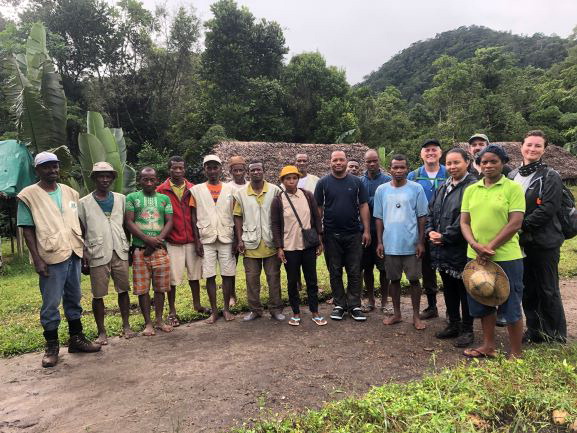 | 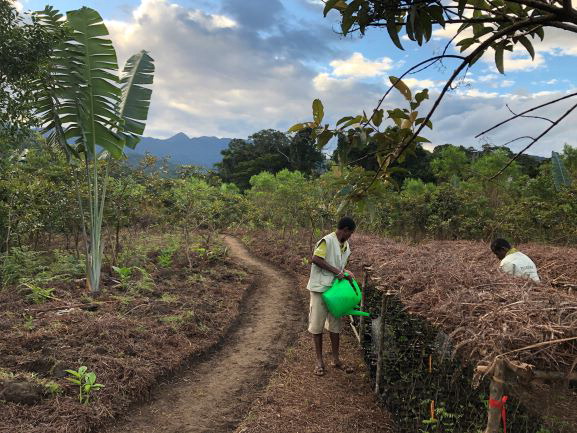 | | NAS and USAID site visit at the field site in Tsitongambarika, Southern Madagascar June 2019 | Nurseries being tended to by local community volunteers in Tsitongambarika, southern Madagascar. Photo courtesy Lina Stankute-Alexander (NAS) | 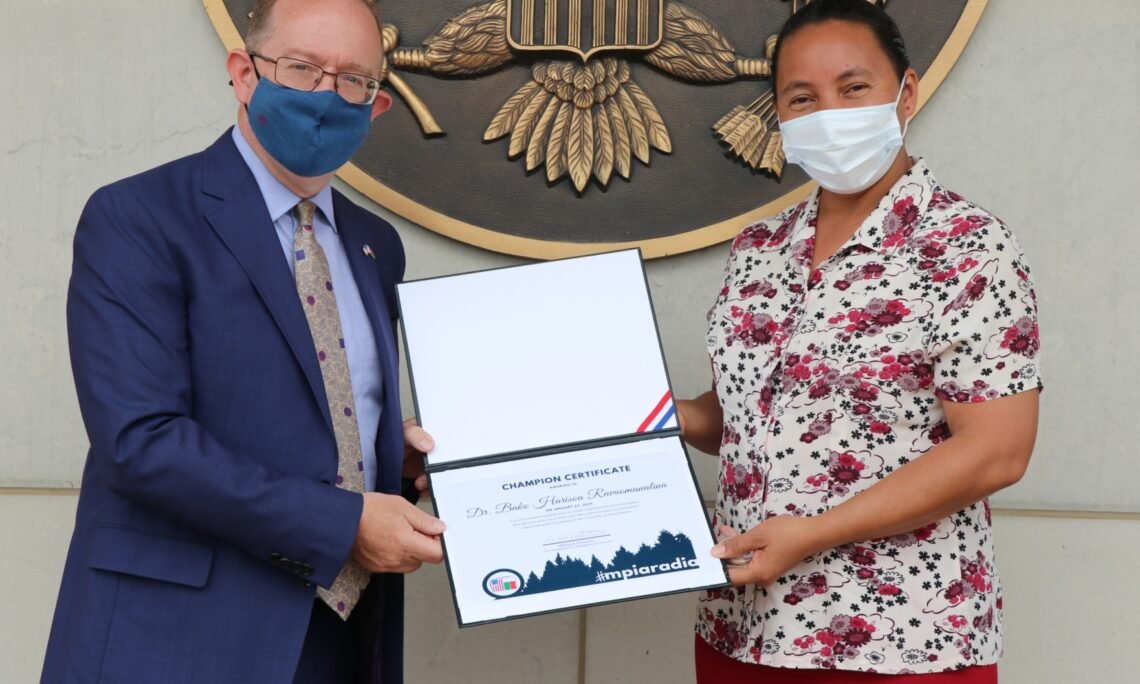 | 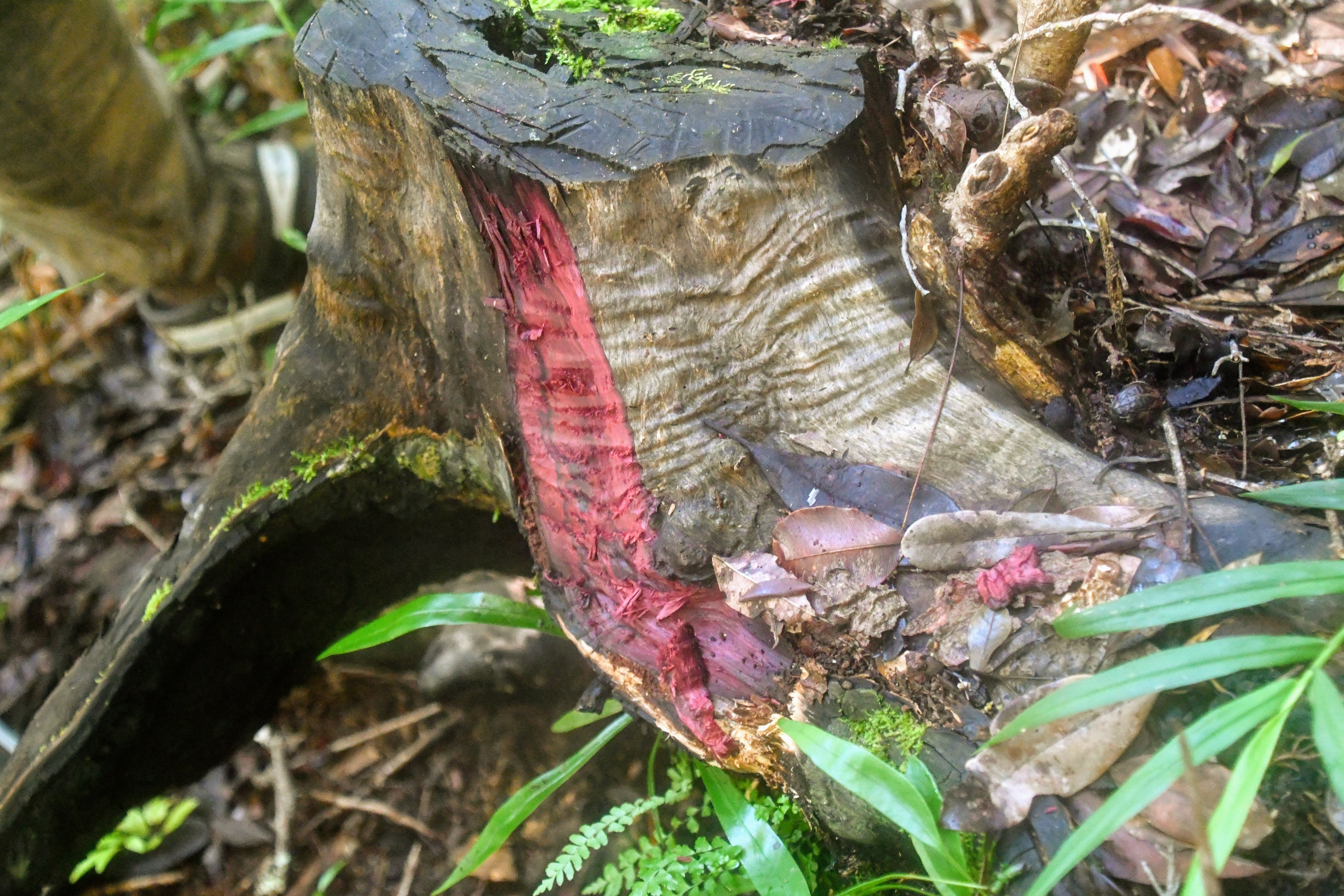 | | The U.S. Ambassador Michael Peter Pelletier awards Dr. Harisoa Ravaomanalina a special certificate of recognition for being the Champion for Madagascar, January 2021. Photo credit: U.S. Embassy, Madagascar | Stump left behind by illegal loggers in Tsitongambarika |
Back to PEER Cycle 7 Grant Recipients
|




